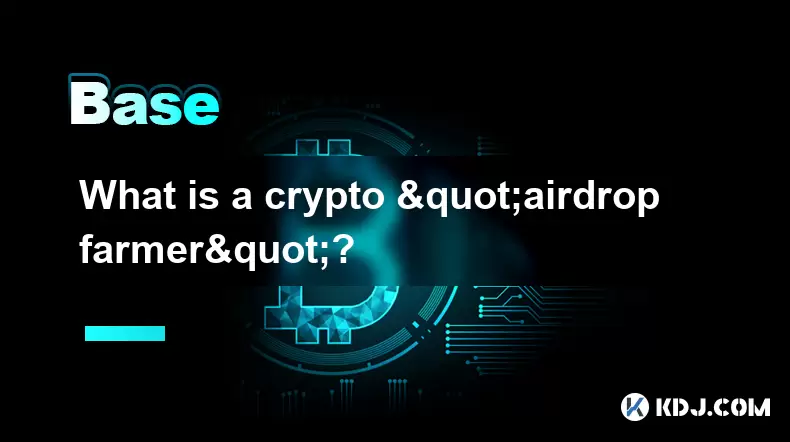-
 Bitcoin
Bitcoin $117400
1.91% -
 Ethereum
Ethereum $3746
3.53% -
 XRP
XRP $3.158
2.99% -
 Tether USDt
Tether USDt $1.000
-0.02% -
 BNB
BNB $783.2
3.14% -
 Solana
Solana $186.6
5.39% -
 USDC
USDC $0.9998
-0.02% -
 Dogecoin
Dogecoin $0.2375
5.35% -
 TRON
TRON $0.3185
1.24% -
 Cardano
Cardano $0.8191
3.17% -
 Hyperliquid
Hyperliquid $44.41
5.63% -
 Sui
Sui $3.993
9.65% -
 Stellar
Stellar $0.4397
6.19% -
 Chainlink
Chainlink $18.25
4.79% -
 Hedera
Hedera $0.2645
11.70% -
 Bitcoin Cash
Bitcoin Cash $553.3
5.35% -
 Avalanche
Avalanche $24.13
4.63% -
 Litecoin
Litecoin $113.3
1.78% -
 UNUS SED LEO
UNUS SED LEO $8.974
0.05% -
 Shiba Inu
Shiba Inu $0.00001406
5.65% -
 Toncoin
Toncoin $3.319
7.32% -
 Ethena USDe
Ethena USDe $1.001
0.00% -
 Uniswap
Uniswap $10.44
4.95% -
 Polkadot
Polkadot $4.098
4.18% -
 Monero
Monero $328.8
1.91% -
 Dai
Dai $1.000
0.01% -
 Bitget Token
Bitget Token $4.563
2.76% -
 Pepe
Pepe $0.00001261
5.19% -
 Aave
Aave $296.6
3.87% -
 Cronos
Cronos $0.1335
3.16%
POS 합의 메커니즘은 무엇입니까? POW 메커니즘과의 주요 차이점
POS는 광업의 계산 능력에 의존하는 POW와 달리 에너지 효율과 확장 성을 제공하는 스테이크에 따라 유효성 검사기를 선택합니다.
2025/06/09 07:50

POS 합의 메커니즘은 무엇입니까? POW 메커니즘과의 주요 차이점
Cryptocurrency 세계는 이러한 디지털 자산을 뒷받침하는 기술에서 상당한 발전을 보았습니다. 이 중 거래를 검증하고 네트워크를 보호하는 합의 메커니즘이 중요합니다. 두 가지 두드러진 메커니즘은 스테이크 증명 (POS)과 작업 증명 (POW)입니다. 이 기사는 POS 합의 메커니즘을 탐구하고 POW 메커니즘과의 주요 차이점을 간략하게 설명합니다.
스테이크 증명 이해 (POS)
POS (Stake of Stake) 는 다양한 블록 체인 네트워크에서 분산 합의를 달성하기 위해 사용하는 합의 알고리즘입니다. POS는 계산 능력에 의존하는 작업 증명과 달리 보유한 코인의 수를 기반으로 유효성 검사기를 선택하고 담보로 '스테이크'를 기꺼이 선택합니다. 이 접근법은 네트워크 보안을위한보다 에너지 효율적이고 확장 가능한 솔루션을 제공하는 것을 목표로합니다.
POS 시스템에서 유효성 검사기는 새로운 블록을 생성하고 네트워크의 지분을 기반으로 트랜잭션을 검증하기 위해 선택됩니다. 검증기가 더 많을수록 다음 블록을 위조 할 가능성이 높아집니다. 이 방법은 참가자가 동전을 팔지 않고 자신의 동전을 붙잡아 네트워크 안정성과 보안을 촉진하도록 장려합니다.
POS의 작동 방식
POS의 작동 메커니즘에는 몇 가지 주요 구성 요소와 프로세스가 포함됩니다. 다음은 작동 방식에 대한 자세한 분석입니다.
스테이 킹 : 참가자들은 일정량의 암호 화폐를 스테이크로 고정시킵니다. 이 스테이크는 보증금으로 작용하며, 유효성 검사기가 악의적으로 작용하면 몰수 될 수 있습니다.
유효성 검사기 선택 : 새 블록을 생성하기위한 유효성 검사기로 선택 될 확률은 일반적으로 스테이크 크기에 비례합니다. 일부 POS 시스템은 스테이크 금액으로 가중 된 임의의 선택 프로세스를 사용합니다.
블록 생성 : 일단 선택되면 유효성 검사기는 새로운 블록을 생성하여 블록 체인에 추가합니다. 이 과정은 POW 시스템의 채굴보다 에너지 집약적이지 않습니다.
보상 및 처벌 : 유효성 검사기는 블록을 성공적으로 생성하고 검증하기위한 보상을받습니다. 그러나 악의적으로 행동하거나 올바르게 검증하지 못하면 스테이크의 일부 또는 전부를 잃을 수 있습니다.
POS의 장점
POS는 POW보다 몇 가지 장점을 제공하므로 많은 블록 체인 네트워크에 매력적인 옵션이됩니다. 주요 이점은 다음과 같습니다.
에너지 효율 : POS는 POW 시스템에서 광업에 필요한 광범위한 계산 능력이 필요하지 않습니다. 이로 인해 에너지 소비가 크게 낮아져 환경 친화적입니다.
보안 : 유효성 검사기가 동전을 스테이크 해야하는 요구 사항은 악의적 인 행동에 대한 강력한 불만을 제기합니다. 유효성 검사기가 네트워크를 타협하려고하면 전체 지분을 잃을 위험이 있습니다.
확장 성 : POS 시스템은 트랜잭션을보다 빠르게 처리하고 POW 시스템보다 더 높은 거래량을 처리 할 수 있으며, 이는 종종 광업 프로세스에 의해 제한됩니다.
탈 중앙화 : 진입 장벽을 낮추면 POS는 더 큰 탈 중앙화를 촉진 할 수 있습니다. 가장 강력한 하드웨어를 가진 사람들이 광업을 지배하는 POW와 달리 POS는 더 많은 참가자가 검증자가 될 수 있도록합니다.
POS와 POW 비교 : 주요 차이점
POS와 POW의 주요 차이점을 이해하는 것은 각 합의 메커니즘의 고유 한 속성을 파악하는 데 필수적입니다. 주요 차이점은 다음과 같습니다.
자원 요구 사항 : POW는 복잡한 수학적 문제를 해결하기 위해 상당한 계산 능력과 전기가 필요합니다. 대조적으로, POS는 참가자가 보유한 지분에 의존하여 더 자원 효율적입니다.
유효성 검사기 선택 : POW는 먼저 암호화 퍼즐을 해결할 수있는 능력에 따라 광부를 선택합니다. 반면에 POS는 스테이크의 크기에 따라 유효성 검사기를 선택합니다. 이는 더 민주적 인 과정입니다.
보안 모델 : POW의 보안은 광업의 경제 비용에 의존하여 공격자가 네트워크를 제어하는 데 비용이 많이 듭니다. POS의 안보는 유효성 검사기의 경제적 지분을 기반으로하며, 악의적으로 행동하면 손실이 발생할 위험이 있습니다.
에너지 소비 : POW는 채굴 공정으로 인한 높은 에너지 소비로 유명합니다. 리소스 집약적이지 않은 POS는 블록 체인 네트워크의 에너지 발자국을 크게 줄입니다.
POS와 POW의 예
이러한 합의 메커니즘의 실제 적용을 설명하기 위해 POS와 POW를 사용하는 잘 알려진 암호 화폐를 살펴 보겠습니다.
이더 리움 2.0 : 이더 리움은 Ethereum 2.0 업그레이드를 통해 POW에서 POS로 전환하고 있습니다. 이러한 움직임은 네트워크의 확장 성을 향상시키고 환경 영향을 줄일 것으로 예상됩니다.
Cardano : Cardano는 안전하고 확장 가능하도록 설계된 Ouroboros라는 POS 프로토콜을 사용합니다. Cardano의 유효성 검사기는 스테이크와 임의의 선택 과정을 기반으로 선택됩니다.
Bitcoin : Bitcoin 최초이자 가장 잘 알려진 암호 화폐 인 POW를 사용합니다. 광부는 복잡한 퍼즐을 해결하기 위해 경쟁하며, 처음 해결 한 것은 블록 체인에 새로운 블록을 추가하게됩니다.
Litecoin : Bitcoin와 유사하게 Litecoin은 POW를 사용하지만 Scrypt라는 다른 알고리즘을 사용하여 메모리 집약적이지 않습니다.
POS에 대한 도전과 고려 사항
POS는 다양한 혜택을 제공하지만 해결해야 할 특정 도전과 고려 사항도 제공합니다.
위험에 처한 문제는 없습니다 : 일부 POS 시스템에서 유효성 검사기는 여러 블록 체인 포크에 투표하도록 장려 할 수 있으며, 하나가 지배적 인 체인이되기를 바라고 있습니다. 이것을 '위험에 처한 것'문제로 알려져 있으며, 이로 인해 네트워크 불안정성을 유발할 수 있습니다.
중앙 집중화 위험 : 소수의 참가자가 총 지분의 상당 부분을 보유하면 네트워크를 제어 할 수 있습니다. 이러한 중앙 집중화 위험은 신중한 설계 및 거버넌스를 통해 완화되어야합니다.
초기 분포 : POS 시스템에서 동전의 초기 분포는 공정성과 보안에 영향을 줄 수 있습니다. 몇몇 엔터티가 초기 공급의 상당 부분을 보유하면 네트워크에 과도한 영향을 줄 수 있습니다.
POS 구현 : 단계별 가이드
POS 네트워크에 참여하는 데 관심이있는 사람들을 위해 시작 방법에 대한 자세한 안내서가 있습니다.
pos cryptocurrency를 선택하십시오 : 연구하고 pos를 사용하는 cryptocurrency를 선택하십시오. 인기있는 옵션에는 Ethereum 2.0, Cardano 및 Tezos가 있습니다.
지갑 설정 : 선택한 Cryptocurrency와 호환되는 지갑을 다운로드하여 설치하십시오. 지갑이 스테이 킹을지지하는지 확인하십시오.
cryptocurrency 획득 : 스테이크를 원하는 cryptocurrency의 필요한 양을 구매하십시오. 평판이 좋은 교환에서 구입하여 지갑으로 옮길 수 있습니다.
동전을 찌르십시오 : 지갑의 지시를 따라 동전을 찌르십시오. 여기에는 일반적으로 일정량의 암호 화폐를 스테이크로 잠그는 것이 포함됩니다.
모니터링 및 관리 : 스테이크와 네트워크의 성능을 주시하십시오. 일부 지갑을 사용하면 필요한 경우 스테이크를 조정하거나 철회 할 수 있습니다.
보상 받기 : 유효성 검사기로서 블록을 성공적으로 생성하고 검증하기위한 보상을 받게됩니다. 이러한 보상은 일반적으로 스테이크에 추가되거나 지갑으로 철회 될 수 있습니다.
자주 묻는 질문
Q1 : 여러 POS 네트워크를 동시에 스테이크 할 수 있습니까?
예, 각 cryptocurrency와 호환 지갑의 필요한 양이있는 한 여러 POS 네트워크에 스테이크를 줄 수 있습니다. 그러나 여러 지분을 관리하는 것은 복잡 할 수 있으므로 각 네트워크의 세부 사항을 이해해야합니다.
Q2 : 올바른 pos cryptocurrency를 선택하려면 어떻게해야합니까?
네트워크 보안, 잠재적 보상, 스테이크의 잠금 기간 및 프로젝트의 전반적인 평판과 같은 요소를 고려하십시오. 커뮤니티 및 개발 팀을 연구하면 귀중한 통찰력을 제공 할 수 있습니다.
Q3 : POS 네트워크가 51%의 공격을 경험하면 어떻게됩니까?
POS 시스템에서 51%의 공격은 공격자가 총 스테이크의 절반 이상을 제어해야합니다. 성공하면 공격자는 잠재적으로 동전을 이중화하거나 거래를 중단 할 수 있습니다. 그러나 공격자가 스테이크 전체를 잃을 위험이 있기 때문에 그러한 공격의 경제 비용은 높습니다.
Q4 : POS 시스템에서 내 지분을 잃을 수 있습니까?
예, 악의적으로 행동하거나 거래를 올바르게 검증하지 못하면 스테이크를 잃을 수 있습니다. POS 시스템은 종종 네트워크의 무결성을 손상시키는 유효성 검사기를 처벌하는 메커니즘을 갖추고 있습니다.
부인 성명:info@kdj.com
제공된 정보는 거래 조언이 아닙니다. kdj.com은 이 기사에 제공된 정보를 기반으로 이루어진 투자에 대해 어떠한 책임도 지지 않습니다. 암호화폐는 변동성이 매우 높으므로 철저한 조사 후 신중하게 투자하는 것이 좋습니다!
본 웹사이트에 사용된 내용이 귀하의 저작권을 침해한다고 판단되는 경우, 즉시 당사(info@kdj.com)로 연락주시면 즉시 삭제하도록 하겠습니다.
- PI 코인, 지갑 기능 및 코인베이스 : 윙윙 거리는 것은 무엇입니까?
- 2025-07-26 18:30:12
- Worldcoin, Punisher Coin 및 Meme Coin Mania : 딱딱한 것은 무엇입니까?
- 2025-07-26 18:30:12
- 유죄 판결, 사법 시스템 및 살인 : 최근 사례를 살펴보고 변화하는 관점
- 2025-07-26 18:50:11
- Dogecoin 궤적 : 밈에서 주류로, 그리고 암호화
- 2025-07-26 17:10:14
- Lasmeta, Pyth Network, Novadrop NFTS : 버즈 디코딩
- 2025-07-26 16:30:12
- Shib Long/Short : Pro처럼 시바 이누 파도를 타기
- 2025-07-26 17:50:12
관련 지식

CEFI와 DEFI의 차이점은 무엇입니까?
2025-07-22 00:28:43
CEFI 및 DEFI 이해 cryptocurrency의 세계에서 CEFI (중앙 금융) 및 DEFI (분산 금융)는 두 가지 별개의 금융 생태계를 나타냅니다. CEFI는 중앙 당국이 운영을 통제하고 사용자 자금을 관리하는 전통적인 금융 기관과 유사한 플랫폼을 말합니다....

잠재적 암호화 에어 드롭 자격이있는 방법은 무엇입니까?
2025-07-23 06:49:44
암호화 에어 드롭이 무엇인지 이해합니다 암호화 에어 드롭은 무료 토큰 또는 동전이 많은 수의 지갑 주소로 분포하는 것을 말하며, 종종 블록 체인 프로젝트에서 인식과 채택을 증가시키기 위해 사용합니다. 이러한 에어 드롭은 예상치 못한 일이 될 수 있거나 사용자의 특정 적...

암호화 "에어 드롭 농부"는 무엇입니까?
2025-07-24 22:22:20
암호화 '에어 드롭 농부'의 역할 이해 암호화 'Airdrop Farmer'는 암호 화폐 에어 드롭에 적극적으로 참여하여 자유 토큰을 축적하는 개인을 말합니다. Airdrops는 블록 체인 프로젝트에서 토큰을 광범위한 청중에게 배포하여 인식...

사이드 체인과 레이어 2의 차이점은 무엇입니까?
2025-07-20 23:35:57
사이드 체인의 개념을 이해합니다 사이드 체인 은 메인 블록 체인과 평행하게 작동하는 별도의 블록 체인, 일반적으로 Bitcoin 또는 Ethereum과 같은 암호 화폐의 메인 넷입니다. 메인 체인과 사이드 체인 사이에서 자산을 안전하게 이동할 수 있도록 설계되었습니다....

IBC (Inter-Blockchain Communication Protocol)는 무엇입니까?
2025-07-19 10:43:17
블록 체인 통신 프로토콜 (IBC) 이해 IBC (Inter-Blockchain Communication Protocol)는 서로 다른 블록 체인 네트워크 간의 상호 운용성을 가능하게하도록 설계된 크로스 체인 통신 프로토콜 입니다. 독립적 인 블록 체인이 데이터와 가치...

샤딩은 확장 성을 어떻게 향상 시킵니까?
2025-07-20 01:21:49
블록 체인의 샤딩 이해 Sharding은 확장 성을 향상시키기 위해 블록 체인 기술에서 점점 더 채택되고있는 데이터베이스 파티셔닝 기술 입니다. 블록 체인의 맥락에서 샤딩은 네트워크를 '파편'이라는 더 작고 관리하기 쉬운 세그먼트로 나누는 것이 포함됩니다...

CEFI와 DEFI의 차이점은 무엇입니까?
2025-07-22 00:28:43
CEFI 및 DEFI 이해 cryptocurrency의 세계에서 CEFI (중앙 금융) 및 DEFI (분산 금융)는 두 가지 별개의 금융 생태계를 나타냅니다. CEFI는 중앙 당국이 운영을 통제하고 사용자 자금을 관리하는 전통적인 금융 기관과 유사한 플랫폼을 말합니다....

잠재적 암호화 에어 드롭 자격이있는 방법은 무엇입니까?
2025-07-23 06:49:44
암호화 에어 드롭이 무엇인지 이해합니다 암호화 에어 드롭은 무료 토큰 또는 동전이 많은 수의 지갑 주소로 분포하는 것을 말하며, 종종 블록 체인 프로젝트에서 인식과 채택을 증가시키기 위해 사용합니다. 이러한 에어 드롭은 예상치 못한 일이 될 수 있거나 사용자의 특정 적...

암호화 "에어 드롭 농부"는 무엇입니까?
2025-07-24 22:22:20
암호화 '에어 드롭 농부'의 역할 이해 암호화 'Airdrop Farmer'는 암호 화폐 에어 드롭에 적극적으로 참여하여 자유 토큰을 축적하는 개인을 말합니다. Airdrops는 블록 체인 프로젝트에서 토큰을 광범위한 청중에게 배포하여 인식...

사이드 체인과 레이어 2의 차이점은 무엇입니까?
2025-07-20 23:35:57
사이드 체인의 개념을 이해합니다 사이드 체인 은 메인 블록 체인과 평행하게 작동하는 별도의 블록 체인, 일반적으로 Bitcoin 또는 Ethereum과 같은 암호 화폐의 메인 넷입니다. 메인 체인과 사이드 체인 사이에서 자산을 안전하게 이동할 수 있도록 설계되었습니다....

IBC (Inter-Blockchain Communication Protocol)는 무엇입니까?
2025-07-19 10:43:17
블록 체인 통신 프로토콜 (IBC) 이해 IBC (Inter-Blockchain Communication Protocol)는 서로 다른 블록 체인 네트워크 간의 상호 운용성을 가능하게하도록 설계된 크로스 체인 통신 프로토콜 입니다. 독립적 인 블록 체인이 데이터와 가치...

샤딩은 확장 성을 어떻게 향상 시킵니까?
2025-07-20 01:21:49
블록 체인의 샤딩 이해 Sharding은 확장 성을 향상시키기 위해 블록 체인 기술에서 점점 더 채택되고있는 데이터베이스 파티셔닝 기술 입니다. 블록 체인의 맥락에서 샤딩은 네트워크를 '파편'이라는 더 작고 관리하기 쉬운 세그먼트로 나누는 것이 포함됩니다...
모든 기사 보기

























































































